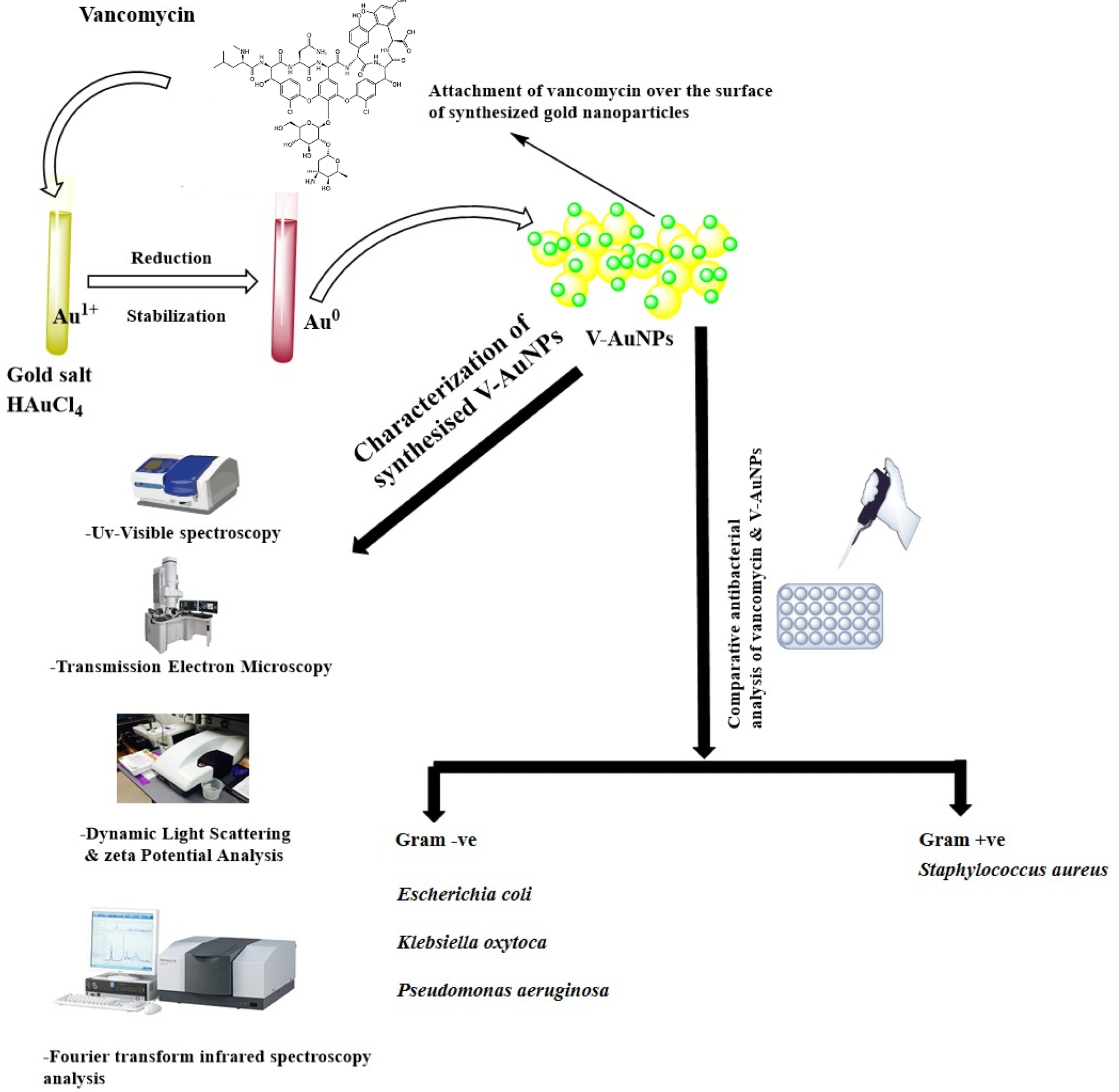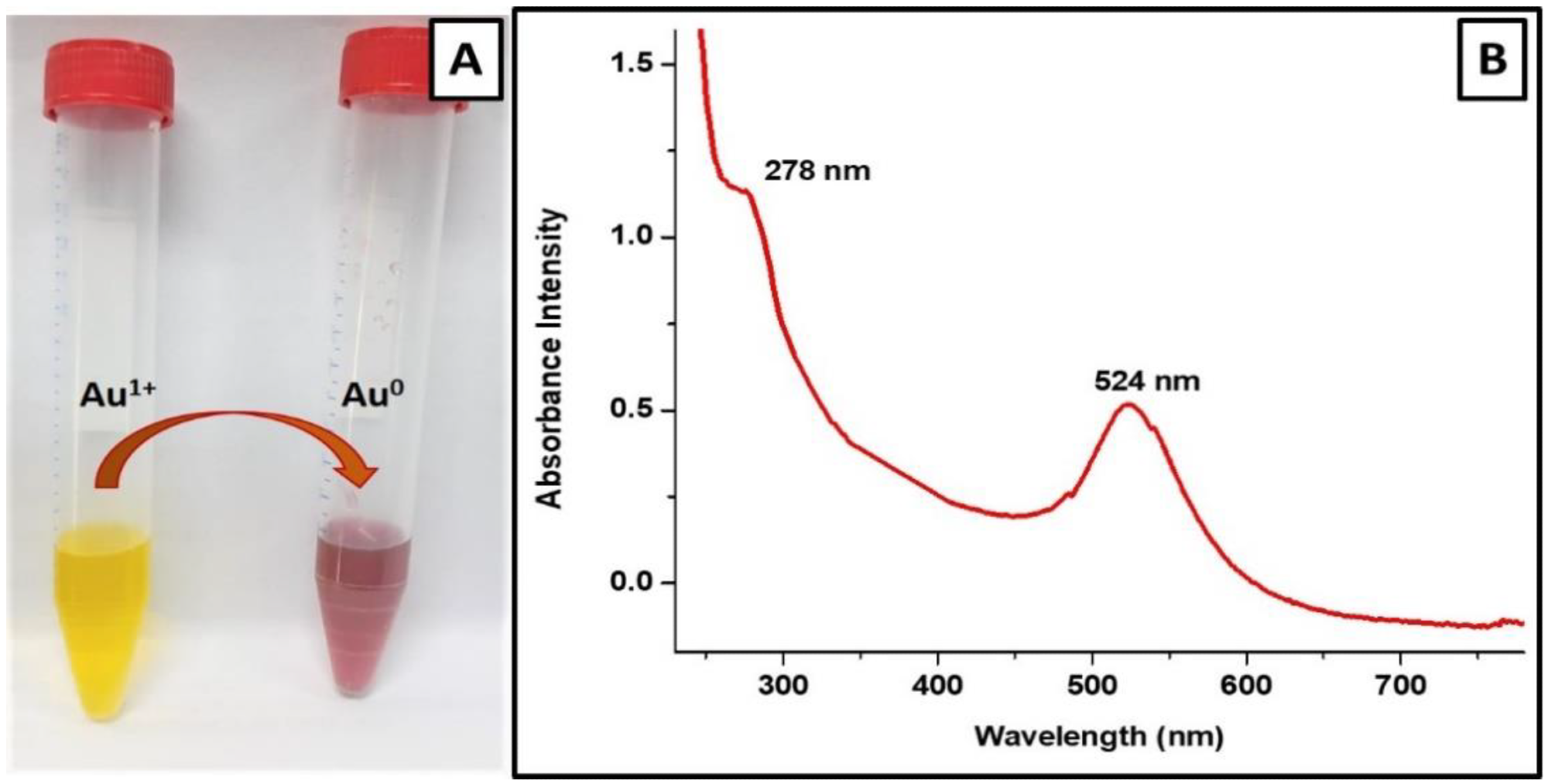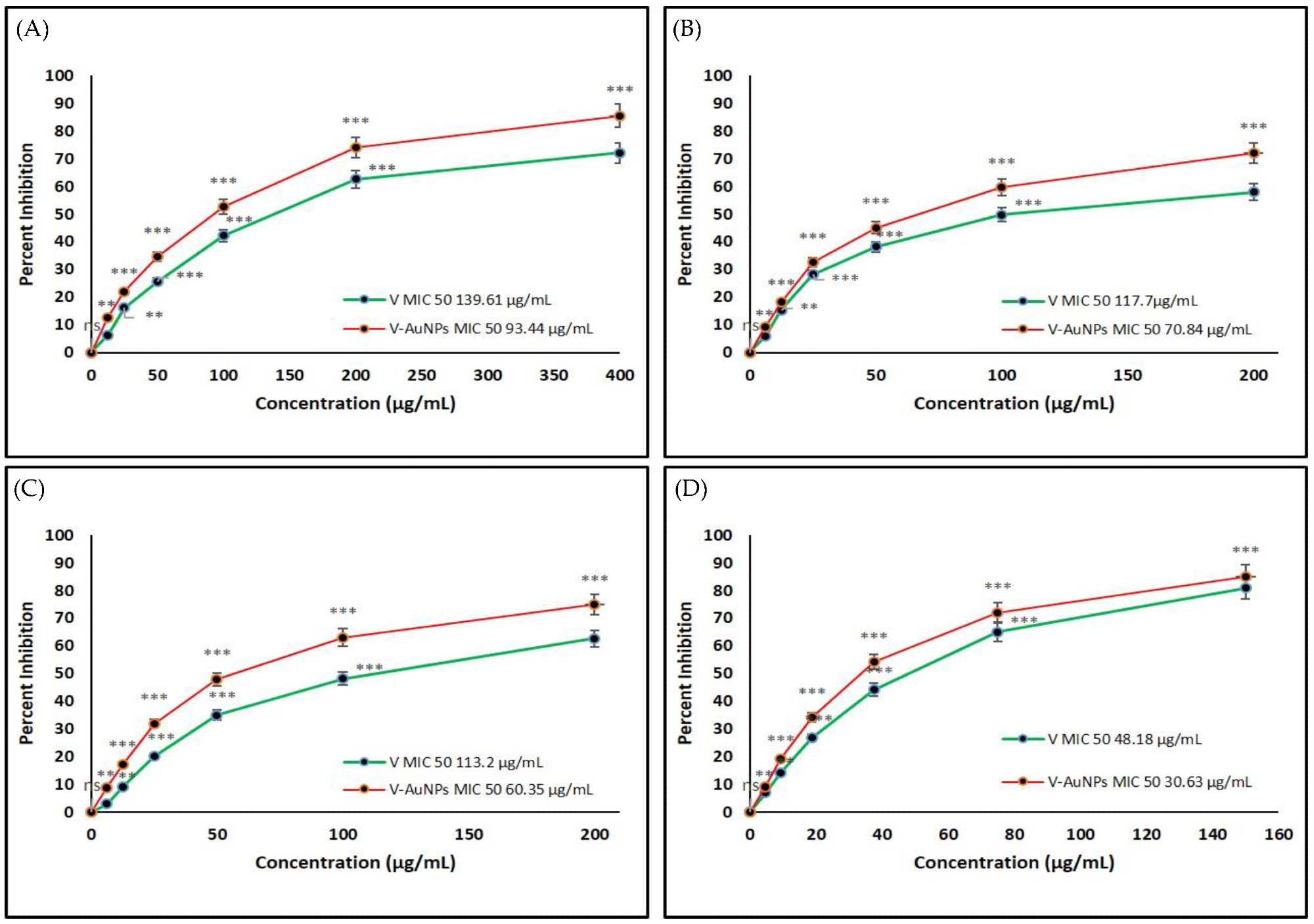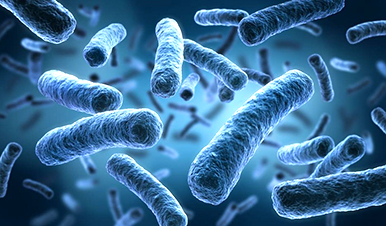A group of researchers recently published a paper in the journal Materials that demonstrated the viability of using vancomycin-functionalized gold nanoparticles (V-GNPs) against pathogenic bacterial strains.
Background
Antibiotic resistance among pathogenic bacteria is rising at a remarkable rate, which poses a significant risk to human health. For instance, vancomycin, a glycopeptide antibiotic, is typically used for treating bacterial infections such as methicillin-resistant Staphylococcus aureus (MRSA). However, the excessive use of vancomycin has led to the emergence of vancomycin-resistant bacterial strains.
Innovative strategies such as the use of nanoparticles (NPs) hold the potential to combat antibiotic-resistant bacterial infections.
The characteristics of NPs, such as surface chemistry, size, and shape, can be manipulated easily, which makes them suitable for fighting bacterial infections.
Metallic NPs, such as GNPs, are specifically being evaluated in different studies for their potential in treating bacterial infections.
Several studies have shown that the antibacterial activities of antibiotics can be enhanced by conjugating GNPs with antibiotics.
In this study, researchers investigated the ability of GNPs to enhance the antibacterial efficacy of the antibiotic vancomycin against different bacterial strains.

Figure 1. Schematic representation of vancomycin-mediated synthesis of gold nanoparticles (V-GNPs), their characterization, and antibacterial testing. © Hagbani, T.A., Yadav, H., Moin, A. et al. (2022)
The Study
Gold (III) chloride trihydrate (HAuCl4·3H2O), phosphate buffer, and vancomycin were used for preparing V-GNPs in the study.
In the preparation, 1, 0.75, 0.50, or 0.25 mg/mL of vancomycin was mixed with a 3 mL reaction mixture containing 50 mM phosphate buffer with a pH value of 7.4 and 1 mM HAuCl4·3H2O, and the resultant mixture was incubated at 60, 50, 40, and 30 oC, respectively, for 48 h.
The synthesized V-GNPs were obtained by centrifugation of the reaction mixture for 30 min at 30,000× g and the collected NPs were treated with 50% v/v ethanol in order to eliminate unattached materials.
The Gram-positive bacterial strain of Staphylococcus aureus and the Gram-negative strains of Pseudomonas aeruginosa, Klebsiella oxytoca, and Escherichia coli were used in the study to evaluate the antibacterial efficacy of V-GNPs.
Each bacterial strain was maintained and cultivated in Mueller Hinton (MH) agar media at 37 oC.
A Shimadzu UV-1601 spectrophotometer was employed to obtain the ultraviolet ultraviolet-visible (UV-vis) spectra of the prepared V-GNPs in the range of 200-800 nm at 1 nm resolution.
The average particle size of the synthesized V-GNPs was determined using a dynamic light scattering particle (DLS) size analyzer, while the zeta-potential of the synthesized NPs was measured using a Malvern Zetasizer Nano-ZS.
A transmission electron microscopy (TEM) operating at an accelerating voltage of 80 kV was used to assess the homogeneity of the prepared V-GNPs, while Fourier transform infrared (FTIR) spectroscopy was performed to evaluate the conformational changes after vancomycin was loaded on the surface of GNPs.
The FTIR spectra were acquired using the potassium bromide (KBr) pellet method with a Shimadzu FTIR-8201 spectrometer within the range of 4000–400 cm-1 at a resolution of 4 cm-1.
The agar well diffusion methodology was utilized to evaluate the efficacy of prepared V-GNPs and pure vancomycin.
The in vitro antibacterial activity of pure vancomycin and V-GNPs was assessed using the minimal inhibitory concentration (MIC) method. The loading efficiency of V-GNPs was also calculated. All findings in the study were analyzed using GraphPad Prism through a one-way analysis of variance (ANOVA).

Figure 2. Characterization of V-GNPs: (A) color change from light yellow to ruby red resulted from SPR; (B) UV–Visible spectra (SPR band at 524 nm). © Hagbani, T.A., Yadav, H., Moin, A. et al. (2022)
Observations
GNPs with good physicochemical properties were synthesized at a pH of 7.4, a temperature of 40 oC, and a vancomycin concentration of 250 µg/mL.
The color of the gold salt solution changed from pale yellow to ruby red following the addition of 250 µg/mL vancomycin antibiotic, indicating the formation of V-GNPs.
The UV-Vis spectra of the prepared V-GNPs revealed the presence of a surface plasmon resonance peak at 524 nm.
The TEM micrographs showed that the synthesized V-GNPs were monodispersed, homogenous, and spherical in shape with an average size of 24 nm. No agglomeration was observed in the TEM micrographs, indicating the suitability of vancomycin as a stabilizing agent.
The hydrodynamic diameter of the V-GNPs was estimated as 77 nm by the DLS.
The zeta potential of the prepared V-GNPs was -18mV, indicating good stability of GNPs. Observations from the FTIR spectroscopy indicated that the vancomycin was efficiently loaded on the GNP surfaces, and the loading efficiency was 86.2%.
Both V-GNPs and pure vancomycin significantly inhibited bacterial growth. However, V-GNPs demonstrated more effective antibacterial activity compared to pure vancomycin even at a lower concentration of vancomycin.
The in vitro antibacterial studies demonstrated that the antibacterial activities of the synthesized V-GNPs were 1.6-, 1.8-, 1.6-, and 1,4-fold higher than pure vancomycin against Staphylococcus aureus, Pseudomonas aeruginosa, Klebsiella oxytoca, and Escherichia coli, respectively.

Figure 3. Determination of the minimum inhibitory concentration (MIC) of vancomycin (V) and V-GNPs against (A) Escherichia coli; (B) Klebsiella oxytoca; (C) Pseudomonas aeruginosa; (D) Staphylococcus aureus. The experiment was repeated in triplicate, and the data shown are the means ± standard errors. Significantly different from control at ** p < 0.01, *** p < 0.001; non-significant from the control at ns p > 0.05. © Hagbani, T.A., Yadav, H., Moin, A. et al. (2022)
Significance of the Study
Taken together, the findings of the study demonstrated that V-GNPs represent a more suitable alternative compared to pure vancomycin against pathogenic bacterial strains.
However, in vivo investigations must be performed to assess the toxicity of V-GNPs before the synthesized vancomycin nanoformulations can be used to treat infections. Nevertheless, this study can act as a starting point for developing better antibacterial nanoformulations.
News
Repurposed drugs could calm the immune system’s response to nanomedicine
An international study led by researchers at the University of Colorado Anschutz Medical Campus has identified a promising strategy to enhance the safety of nanomedicines, advanced therapies often used in cancer and vaccine treatments, [...]
Nano-Enhanced Hydrogel Strategies for Cartilage Repair
A recent article in Engineering describes the development of a protein-based nanocomposite hydrogel designed to deliver two therapeutic agents—dexamethasone (Dex) and kartogenin (KGN)—to support cartilage repair. The hydrogel is engineered to modulate immune responses and promote [...]
New Cancer Drug Blocks Tumors Without Debilitating Side Effects
A new drug targets RAS-PI3Kα pathways without harmful side effects. It was developed using high-performance computing and AI. A new cancer drug candidate, developed through a collaboration between Lawrence Livermore National Laboratory (LLNL), BridgeBio Oncology [...]
Scientists Are Pretty Close to Replicating the First Thing That Ever Lived
For 400 million years, a leading hypothesis claims, Earth was an “RNA World,” meaning that life must’ve first replicated from RNA before the arrival of proteins and DNA. Unfortunately, scientists have failed to find [...]
Why ‘Peniaphobia’ Is Exploding Among Young People (And Why We Should Be Concerned)
An insidious illness is taking hold among a growing proportion of young people. Little known to the general public, peniaphobia—the fear of becoming poor—is gaining ground among teens and young adults. Discover the causes [...]
Team finds flawed data in recent study relevant to coronavirus antiviral development
The COVID pandemic illustrated how urgently we need antiviral medications capable of treating coronavirus infections. To aid this effort, researchers quickly homed in on part of SARS-CoV-2's molecular structure known as the NiRAN domain—an [...]
Drug-Coated Neural Implants Reduce Immune Rejection
Summary: A new study shows that coating neural prosthetic implants with the anti-inflammatory drug dexamethasone helps reduce the body’s immune response and scar tissue formation. This strategy enhances the long-term performance and stability of electrodes [...]
Scientists discover cancer-fighting bacteria that ‘soak up’ forever chemicals in the body
A family of healthy bacteria may help 'soak up' toxic forever chemicals in the body, warding off their cancerous effects. Forever chemicals, also known as PFAS (per- and polyfluoroalkyl substances), are toxic chemicals that [...]
Johns Hopkins Researchers Uncover a New Way To Kill Cancer Cells
A new study reveals that blocking ribosomal RNA production rewires cancer cell behavior and could help treat genetically unstable tumors. Researchers at the Johns Hopkins Kimmel Cancer Center and the Department of Radiation Oncology and Molecular [...]
AI matches doctors in mapping lung tumors for radiation therapy
In radiation therapy, precision can save lives. Oncologists must carefully map the size and location of a tumor before delivering high-dose radiation to destroy cancer cells while sparing healthy tissue. But this process, called [...]
Scientists Finally “See” Key Protein That Controls Inflammation
Researchers used advanced microscopy to uncover important protein structures. For the first time, two important protein structures in the human body are being visualized, thanks in part to cutting-edge technology at the University of [...]
AI tool detects 9 types of dementia from a single brain scan
Mayo Clinic researchers have developed a new artificial intelligence (AI) tool that helps clinicians identify brain activity patterns linked to nine types of dementia, including Alzheimer's disease, using a single, widely available scan—a transformative [...]
Is plastic packaging putting more than just food on your plate?
New research reveals that common food packaging and utensils can shed microscopic plastics into our food, prompting urgent calls for stricter testing and updated regulations to protect public health. Beyond microplastics: The analysis intentionally [...]
Aging Spreads Through the Bloodstream
Summary: New research reveals that aging isn’t just a local cellular process—it can spread throughout the body via the bloodstream. A redox-sensitive protein called ReHMGB1, secreted by senescent cells, was found to trigger aging features [...]
AI and nanomedicine find rare biomarkers for prostrate cancer and atherosclerosis
Imagine a stadium packed with 75,000 fans, all wearing green and white jerseys—except one person in a solid green shirt. Finding that person would be tough. That's how hard it is for scientists to [...]
Are Pesticides Breeding the Next Pandemic? Experts Warn of Fungal Superbugs
Fungicides used in agriculture have been linked to an increase in resistance to antifungal drugs in both humans and animals. Fungal infections are on the rise, and two UC Davis infectious disease experts, Dr. George Thompson [...]





















